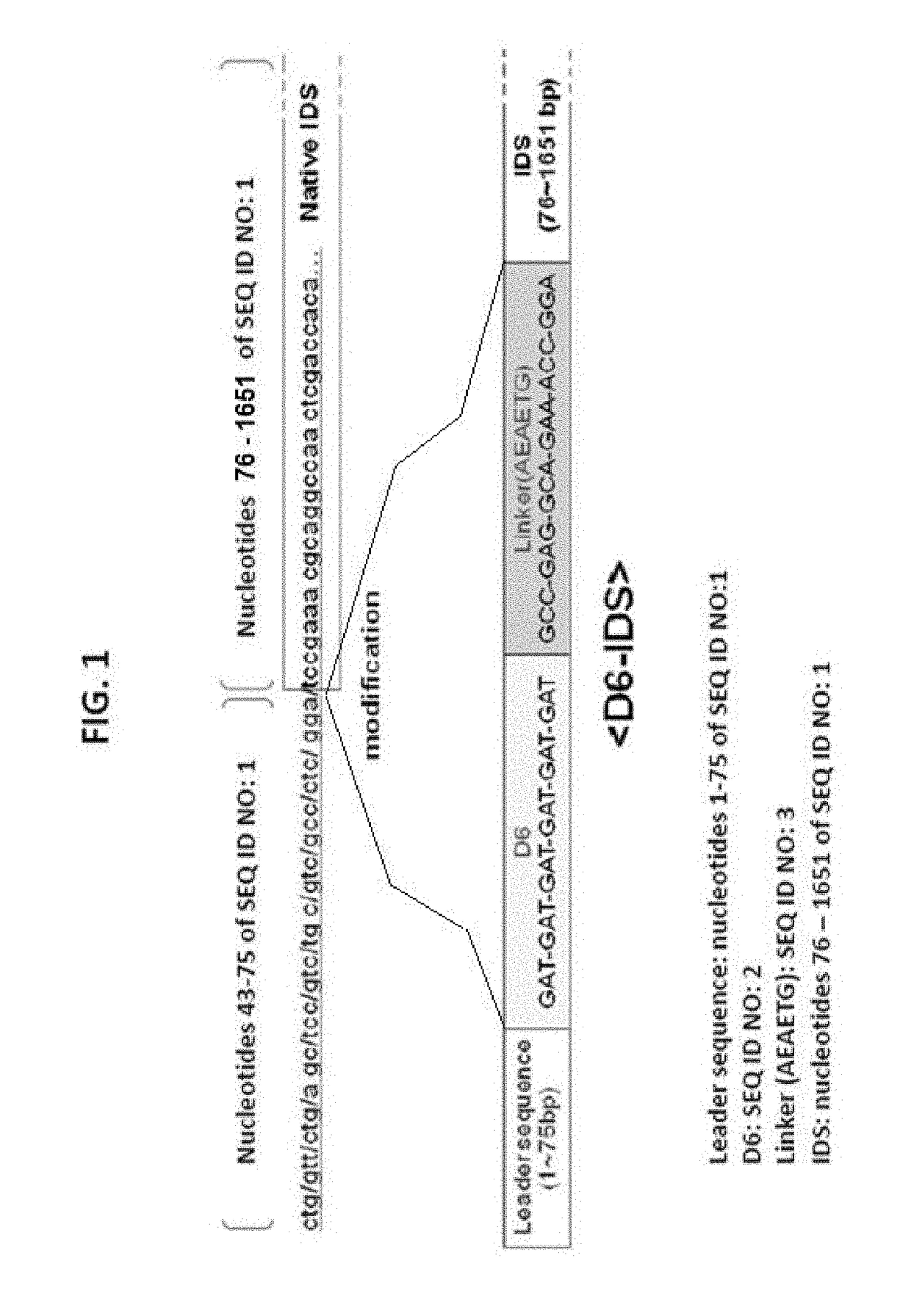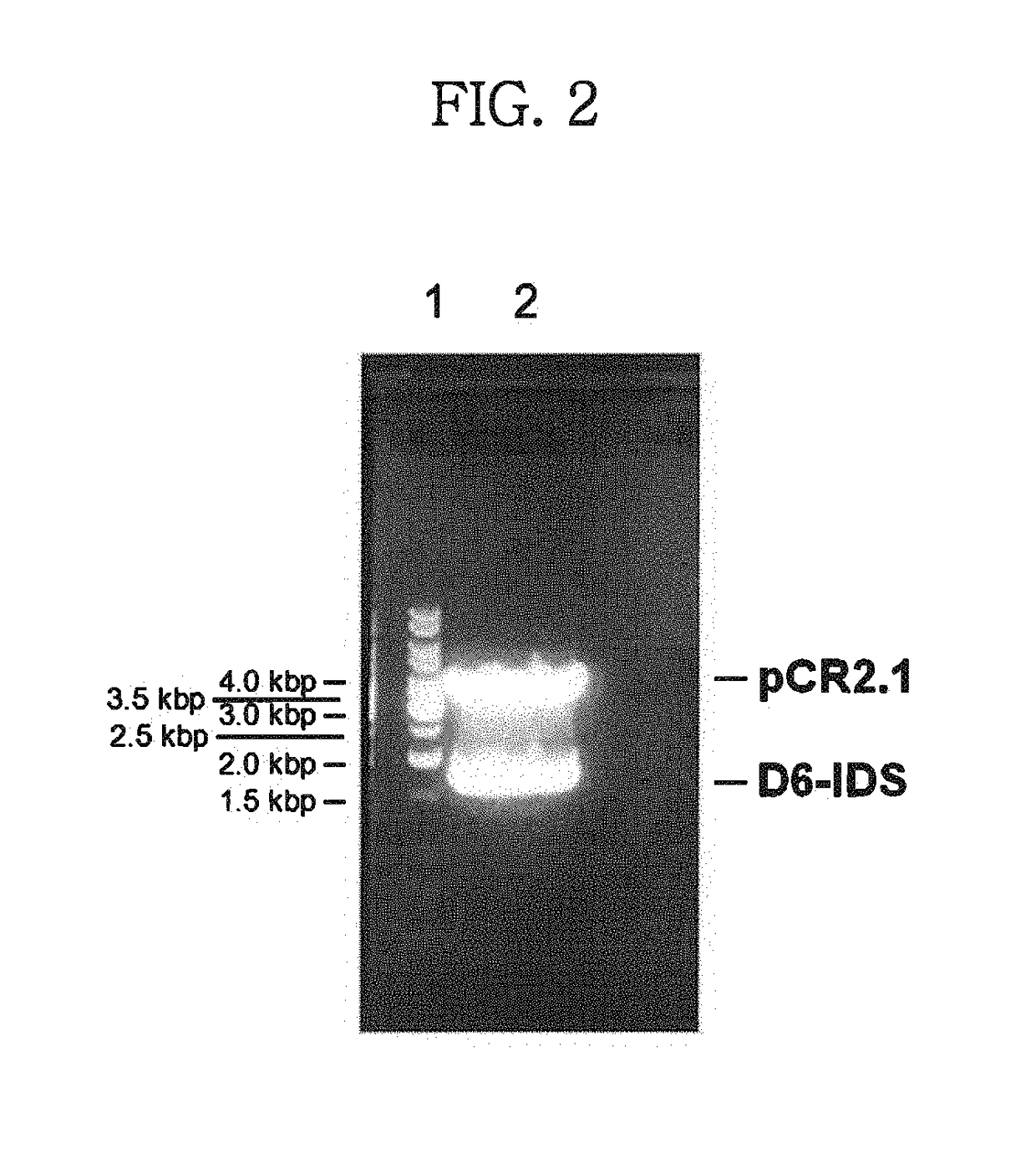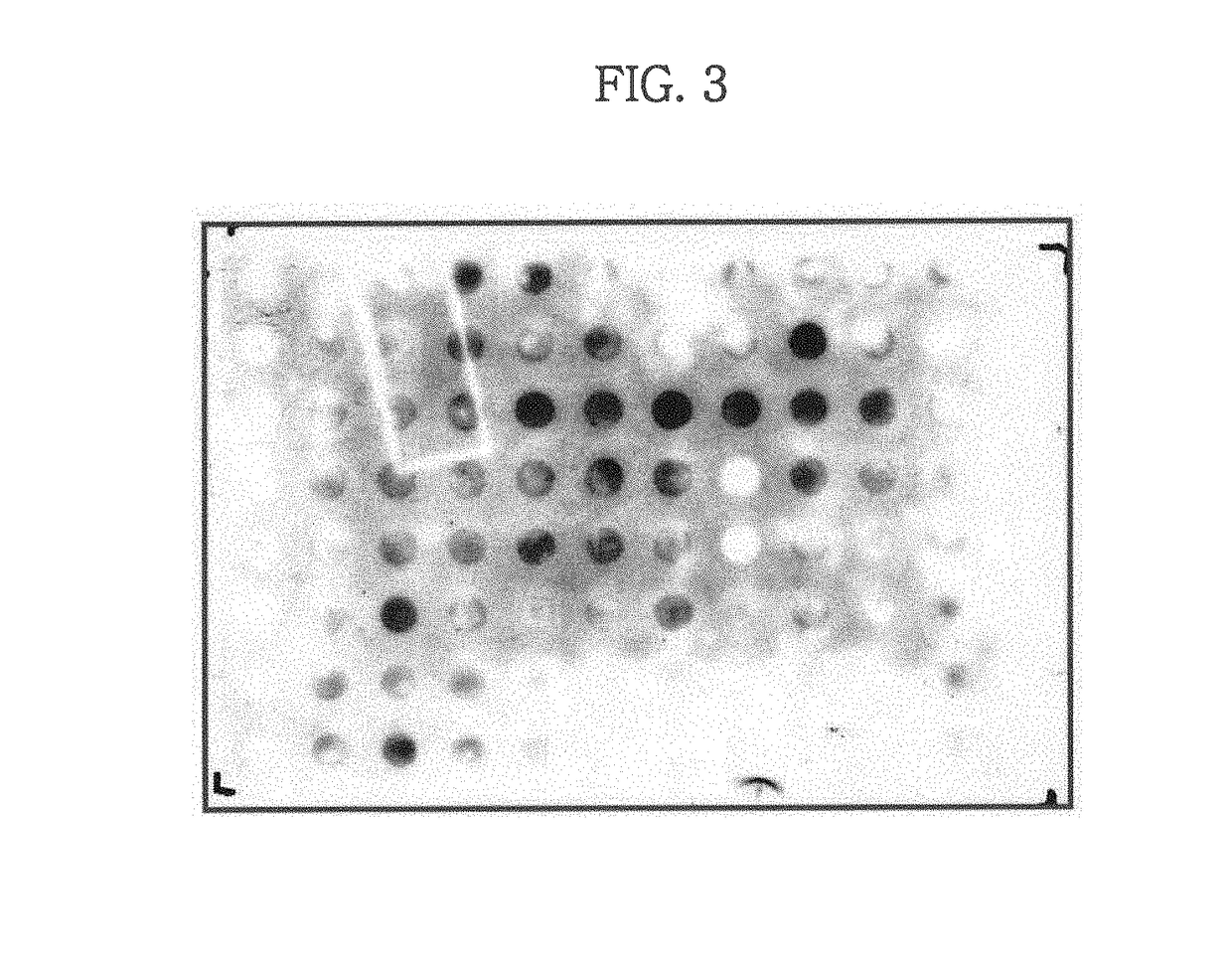Iduronate-2-sulfatase and use thereof
a technology of iduronate and sulfatase, which is applied in the field of improved iduronate2sulfatase, can solve the problems of joint stiffness and limited motion, central nervous system involvement, and affecting the development of peptide/protein components, and create a great burden on patients and their families
- Summary
- Abstract
- Description
- Claims
- Application Information
AI Technical Summary
Benefits of technology
Problems solved by technology
Method used
Image
Examples
example 1
on of Modified IDS Gene
[0047]In order to solve the problem that the wild-type IDS enzyme has a short half-life in vivo and cannot reach the bone when administered, a genetic modification was made to a wild-type IDS gene. In consideration of the fact that hydroxyapatite, a main ingredient of the bone, is positively charged, an oligonucleotide encoding negatively charged amino acids was inserted into the gene so that the resulting IDS polypeptide was negatively charged. Specifically, a vector (PCR2.1-IDS) carrying a CDS fragment (˜1.7 kb, SEQ ID NO: 1) which was obtained by treating human wild-type IDS cDNA (GenBank accession No. NM_000202) with NheI / XhoI, was provided by Samsung Medical Center. An oligonucleotide consisting of six tandem codons for aspartic acid (GAT) (D6, SEQ ID NO: 2) and a linker sequence (SEQ ID NO: 3) was inserted between the 75th and 76th nucleotides of the CDS fragment. Because D6 and the linker were located between the N-terminal leader sequence and the IDS s...
example 2
n and Confirmation of Improved IDS Protein
[0048] Construction of Modified IDS Expression Vector
[0049]Digestion with NheI / XhoI excised a modified IDS (D6-IDS) gene from the vector prepared in Example 1 (see FIG. 2). This gene fragment was sub-cloned into a pMGS vector (Korean Patent Application No. 2000-43996; PCT / KR01 / 01285), which was previously treated with the same restriction enzymes, to construct a recombinant IDS expression vector pMSG-D6-IDS. The gene introduced into the vector was analyzed by base sequencing.
[0050] Transfection of Modified IDS Expression Vector
[0051]The pMGS-D6-IDS vector constructed in was linearized with NdeI, and purified with a QIAQuick PCR purification kit. Its DNA concentration was determined before use in transfection. CHO DG44(S)-EX cells (dhfr− / dhfr−, Colombia University) (RMCB #38) were used as host cells. The cells were maintained in a serum-free medium (glutamine-supplemented EX-CELL CD CHO medium, SAFC Bioscience) at 37±1° C. under 5±1% CO2 wit...
example 3
n and Purification of Improved IDS Protein
[0055] Production of Improved IDS
[0056]One of the cryo-preserved cell lines obtained in Example 2 was rapidly thawed and placed in a germ-free centrifugation tube. After centrifugation to remove the supernatant, the resultant cell pellet was suspended in an animal component-free EX-CELL® CD CHO medium supplemented with glutamine (0.8 g / L) in a flask, and cultured at 37±1° C. in a 5±1% CO2 atmosphere. The cells were subcultured every 2-3 days using a shaker flask until the culture volume was extended to 2 L. When the cell number was increased sufficiently to apply to a bioreactor, the cells were inoculated into the bioreactor. During the cultivation of the cells, a sample was taken from the bioreactor, and observed for cell condition under a microscope and analyzed for pH, cell concentration, cell viability, glucose concentration, glutamine concentration, and ammonia concentration. According to this information, glucose and glutamine were rep...
PUM
| Property | Measurement | Unit |
|---|---|---|
| Length | aaaaa | aaaaa |
| Length | aaaaa | aaaaa |
| Mass | aaaaa | aaaaa |
Abstract
Description
Claims
Application Information
 Login to View More
Login to View More - R&D
- Intellectual Property
- Life Sciences
- Materials
- Tech Scout
- Unparalleled Data Quality
- Higher Quality Content
- 60% Fewer Hallucinations
Browse by: Latest US Patents, China's latest patents, Technical Efficacy Thesaurus, Application Domain, Technology Topic, Popular Technical Reports.
© 2025 PatSnap. All rights reserved.Legal|Privacy policy|Modern Slavery Act Transparency Statement|Sitemap|About US| Contact US: help@patsnap.com



